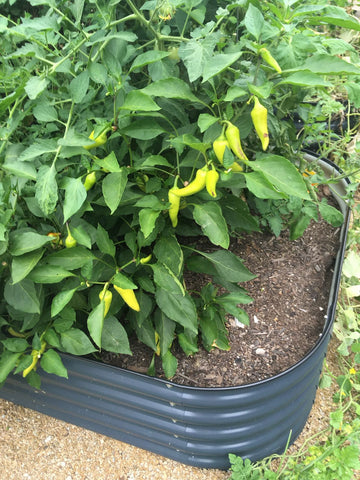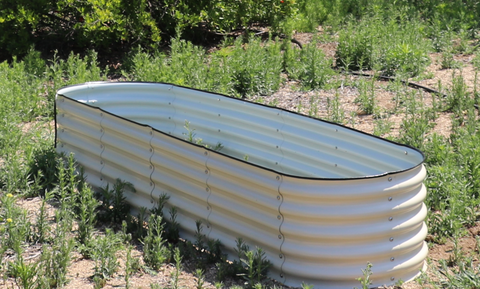Knowledge from Olle Garden Bed: How To Protect Your Garden From The Cold
It's worth getting your garden ready from the cold in advance. The fact is that cold weather and frost can damage and often kill plants and crops. Seedlings, new grafts and new plants are particularly vulnerable to cold weather, especially severe cold. But as long as you prepare your garden, the plants in it can survive in the cold winter. But before we enter, let's talk about hard frost and frost, which are two common problems that cause serious winter damage to crops and plants: Read here are some things that you should know when It comes to Olle Garden Beds!

Frozen
Freezing occurs when the temperature drops to 32 ° f or 0 ° c or below the freezing point of water. When the temperature drops, the water in the plants will also freeze. Freezing can lead to breakage of plant cells, resulting in irreparable damage. Although different varieties of plants have different responses to freezing temperature, tropical plants, annuals and hardy perennials are vulnerable to cold.
The dormant plants, trees and shrubs are likely to survive in the cold winter, but once new flowers come out in spring; they will be affected by the quarter end freeze. The root hardy perennial plants seriously affected by winter freezing can survive the damage if they remain dormant until spring.
Frost
Frost is common on clear and cold nights when the temperature drops close to freezing but the surface temperature drops below freezing. Changes in temperature cause ice crystals to form in the air. Although frost is common at freezing temperatures, it is not always the case. This is why it is important to check the weather forecast so that you can prepare your garden in advance.
Different types of frost have different effects on plants. Frost is a light, feathery frost that occurs on cold mornings. This type of frost occurs when water in the air becomes ice crystals. Frost occurs when water freezes rapidly in clouds or fog. This gives the cream a unique glazed appearance. Black frost is an invisible dry frost that turns plants into black vegetation.

How to protect your garden from frost and freezing
Plants need three things to survive in the cold and freezing: shelter, insulation and warm air. If you want to keep plants comfortable and warm in winter, make sure that the microclimate has warm air and soil. Microclimate refers to areas with different climates from surrounding areas. The following are ways to reduce the impact of cold weather on plants and crops:
Protect plants from frost bags
Frost is most common in low-lying areas, when the soil is more vulnerable to the impact of elements, especially dry and strong winter wind. Placing plants in higher areas can minimize frost bags, otherwise it may cause irreparable winter damage. It is also a good idea to check your outdoor space to see where it is easy to hard freeze.
Construction of raised garden beds
Raised garden beds are the perfect solution for low-lying gardens, with plants at zero altitude. Elevated beds protect plants from harsh elements while keeping the soil warm in winter. In summer, elevated beds keep the soil cool.
In other words, when planting plants on raised garden beds, always keep in mind the watering schedule, as the soil tends to dry faster. You can enhance the insulation of the elevated bed by adding a layer of covering near the base of the plant.
Insulation with hot compost
This technology may be an ancient technology, but it is still one of the most effective ways to protect plants from cold. Use hot compost to heat the soil so that plants are not too cold when exposed to freezing temperatures. Compost helps isolate plants and also promotes plant growth. This is done by treating the completed compost in the center of the elevated bed. Do not plant seeds or transplant seedlings directly into hot compost, as this will kill the plant.
Soil preheating
The soil is preheated to absorb and maintain heat, so that the ground can maintain sufficient temperature to promote better germination rate and easy transplantation. To preheat the soil, use dark covering materials, such as black plastic covers, landscape fabrics, and even infrared transmitting plastic covers to capture heat from the sun. This material is very effective in keeping the soil warm throughout the night and after winter.
More importantly, plastic materials will inhibit the growth of weeds, so this technology will definitely reduce your yard work. The only thing to remember when preheating soil is to know the preferred growth temperature of plants. If these plants are exposed to high temperatures for a long time, you may eventually kill them.

Adhere to the correct planting schedule
There are significant differences between ground and air temperatures. The temperature may be higher than freezing point, but the ground temperature will not be so cold. In order to ensure the health of plants, please pay attention to the planting conditions in your area. Planting early may be tempting, but your garden will be better if you plant at the right time.
Check the cold resistant area and microclimate of plants in your area according to the usda, and adhere to the correct planting schedule. You can also view the average date of the last frost in your area or search for weather updates online. If you purchased a seed pack, please check the planting instructions on the back.
Finally, count backwards from your average last frost date to determine the correct planting schedule. Slow growing herbs and flowering plants can be grown indoors 10 to 12 weeks before the last frost. On the other hand, peppers and tomatoes can start indoors 4 to 8 weeks before the last frost. If you start with autumn seeds, you can also do this indoors if the temperature is not suitable for germination.
Planting plants in cold months can be challenging, but as long as you prepare your garden in advance, it is possible to take care of a prosperous garden when the temperature drops.
